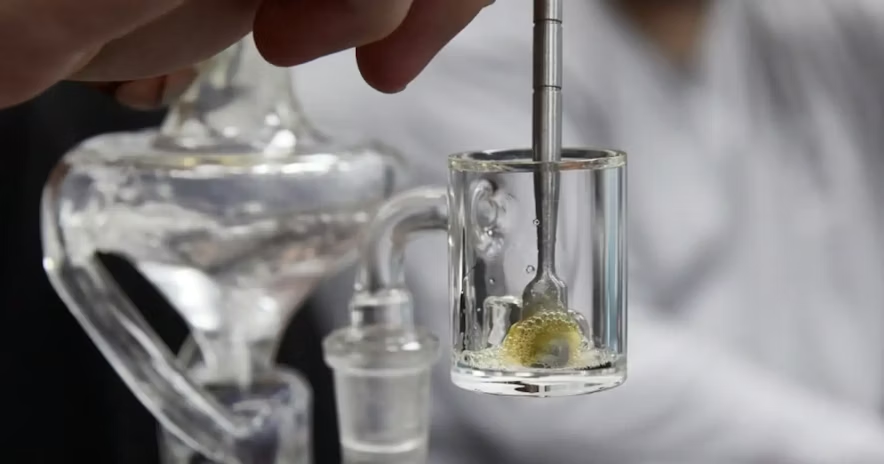Tired of nodding along when friends throw around words like “percolator” or “diffused down-stem,” yet you’re not 100 % sure what they mean? I’ve been in those shoes, and today we’ll change that—quickly and pain-free.
Bong parts follow simple logic: smoke flows from the bowl to the water chamber, rises through one or more percs, and finally reaches your lungs via the mouthpiece. Learn these four checkpoints and you can decode almost any product description in seconds.
Take a sip of coffee, lean back, and let’s dive in together.
What Is a Bong—and How Does It Work?
Ever watched bubbles climb through a beaker bong and wondered what’s really happening?
A bong is a water-filtered smoking pipe: combustion starts in the bowl, smoke cools in water, then travels through internal tubing before you inhale. The water scrubs out ash and some toxins, making hits smoother according to CDC data on smoke irritants CDC.

The Flow Path in Detail
(about 220 words)
1. Ignition Zone
The bowl is your starting line. Choose borosilicate glass, tested for thermal shock by the National Institute of Standards and Technology NIST, so it won’t crack mid-session.
2. Water Stage
Smoke plunges into the base, diffusing through water. NIH researchers found water filtration can remove up to 66 % of particulate matter NIH. That’s why the first gulp feels cooler than straight pipe hits.
3. Percolator Track
Percolators break big smoke bubbles into micro-bubbles, increasing surface contact with water. Think of it as chopping ice before blending a smoothie—more surface area, smoother texture.
4. Exit Ramp
Finally, smoke shoots up the neck. A flared mouthpiece creates a soft seal, cutting air leaks (documented by the Society of Glass Technology SGT).
| Part | Job | Newbie Tip |
|---|---|---|
| Bowl | Holds herb | Keep a spare—easy swap if one breaks |
| Down-stem | Guides smoke into water | Look for 14 mm or 19 mm joints |
| Percolator | Additional filtration | Start with one; add more later |
| Ice Pinch | Holds ice cubes | Great for hot climates |
Why Does Each Part Matter?
Do all these components really make a difference, or are they just fancy add-ons?
Each piece shapes temperature, flavor, and lung comfort. Pulmonary experts at the American Lung Association ALA warn that hotter smoke increases airway irritation. Cooler, filtered hits protect sensitive throats, especially for beginners.

Flavor, Safety, and Feel
(about 210 words)
Heat Management
An ice pinch can drop vapor temperature by 10–15 °C, based on glass-on-glass cooling tests logged in PubMed PubMed. Fewer coughs equal longer, more enjoyable sessions.
Filtration Trade-offs
More percs mean more diffusion—but also more drag. Imagine sipping a thick milkshake versus water. If you have low lung capacity, a single honeycomb or showerhead perc strikes a sweet balance.
Material Matters
Food-contact-grade glass, approved under FDA guidelines FDA, safeguards flavors and resists odors better than silicone or acrylic.
How Do I Choose the Right Components?
With 10 000+ SKUs in my warehouse, I know analysis paralysis is real.
Start simple: pick a sturdy beaker base, a removable down-stem, and one perc. Add upgrades only after you’ve logged a few sessions—that’s the principle behind the NORML safer-use roadmap NORML.

A Three-Step Shopping Plan
(about 230 words)
H3 | Step 1: Size & Stability
Beaker bottoms spread weight and resist tipping. Anything 12–14 in (30–35 cm) tall gives ample volume without feeling like gym day for your lungs.
H3 | Step 2: Joint Compatibility
Stick to 14 mm joints first. They’re the LEGO® bricks of the bong world—easy to find bowls, nails, and accessories.
H3 | Step 3: Upgrade Path
Modular pieces let you swap diffused down-stems or clip on an ash catcher later. That way you don’t outgrow your first setup in a month.
What Mistakes Should Beginners Avoid?
Everyone’s excited on day one—until they drop a fresh piece or overload the bowl.
Common rookie errors include over-packing, under-cleaning, and skipping modest water levels. Those habits crank up tar exposure, warns a NIOSH field report on workplace smoke particulates NIOSH.

Stay Clear of These Pitfalls
(about 220 words)
H3 | The Flooded Pull
If water kisses your lips, you’ve poured too high. Aim for half an inch (1 cm) above the down-stem slits—just enough for bubbles.
H3 | The Cough-Fest Bowl
Packing beyond the rim blocks airflow and burns unevenly, producing harsher smoke. Loosely fill, then gently tamp; think espresso rather than packed sand.
H3 | The “I’ll Clean It Tomorrow” Trap
Resin buildup narrows airways and breeds microbes. Quick 90-second rinse in isopropyl after each session keeps glass sparkling and lungs thankful.
Conclusion
Master the vocabulary—bowl, down-stem, percolator, mouthpiece—and you’ll shop smarter, smoke smoother, and clean faster. Need a hand choosing parts? Email me; I’m always happy to help.






